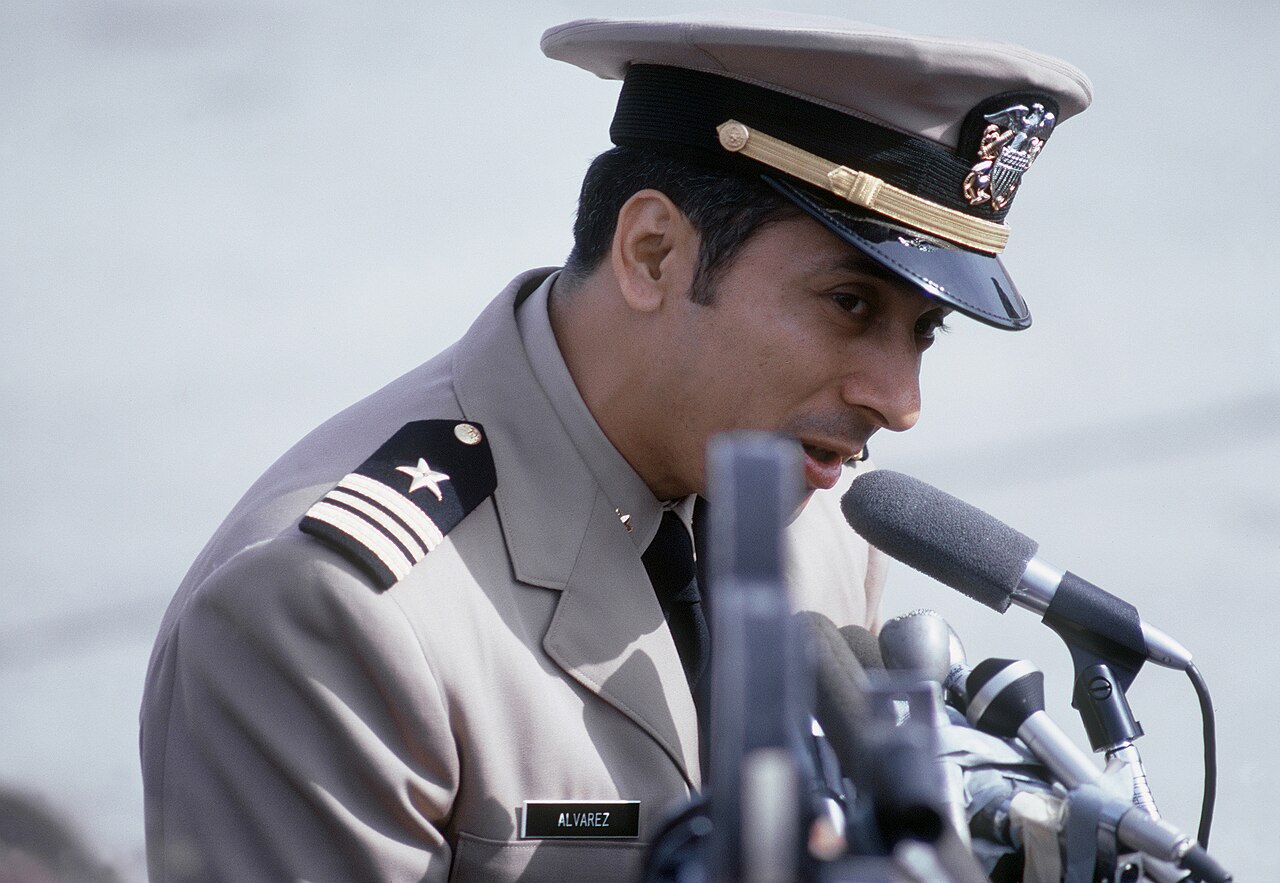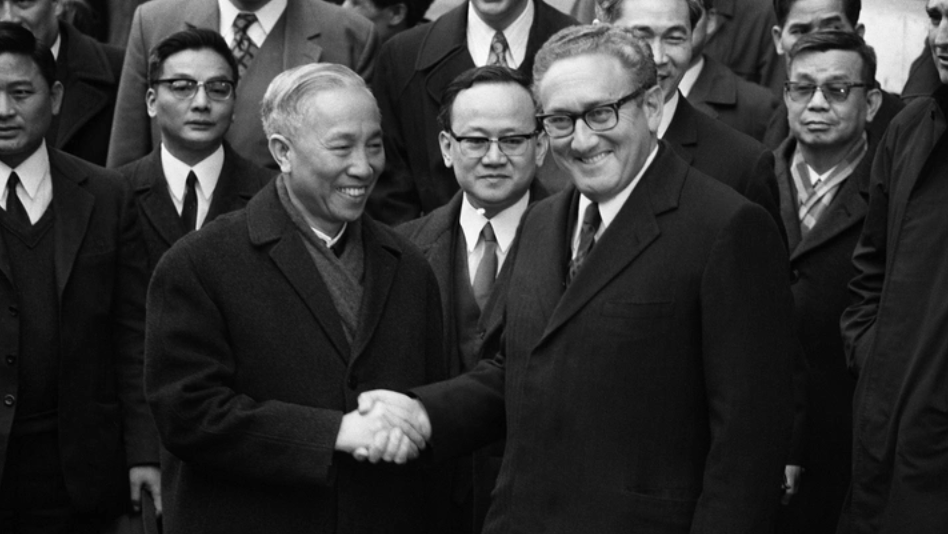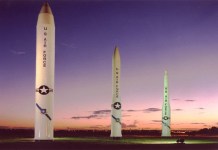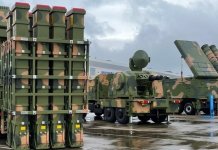US lawmakers are advocating for the swift passage of legislation to award the Congressional Gold Medal — the highest civilian honor bestowed by the US Congress — to retired Cmdr. Everett Alvarez Jr., an 86-year-old Navy veteran recognized as the first aviator shot down in the Vietnam War and the second-longest held prisoner of war (POW) in US history.
With Congress scheduled to reconvene on November 13, the initiative to recognize Alvarez’s extraordinary resilience and commitment to his country after more than 3,000 days in captivity is gaining traction, according to Stars and Stripes, a media outlet owned by the United States Department of Defense.
Alvarez was captured on August 5, 1964, during a bombing mission near the North Vietnam-China border. He was the first American soldier taken prisoner in the conflict and was subjected to harsh treatment in the notorious North Vietnamese prison known as the “Hanoi Hilton.”
Throughout his time in captivity, Alvarez faced severe beatings, torture, and starvation, yet he maintained his loyalty to the United States and offered support to fellow prisoners of war.
The Everett Alvarez Jr. Gold Medal Act, which boasts 301 co-sponsors, successfully passed the House with unanimous consent in May.
Rep. Jimmy Panetta, a Navy veteran from California who spearheaded the House bill, emphasized Alvarez’s symbolic representation of American resilience and selfless service as the second-longest-serving POW in the nation’s history.
“As the second longest-serving prisoner of war in the history of our nation, Cmdr. Everett Alvarez Jr. stands out as a symbol of American resiliency and selfless service,” said Rep. Jimmy Panetta.
Currently, the focus is on the swift adoption of the bill in the Senate, where it has garnered 67 co-sponsors. Lawmakers are optimistic that the Senate will consider the legislation when Congress reconvenes on November 13.
The bill is awaiting a hearing in the Senate Committee on Banking, Housing, and Urban Affairs, but it has enough support to bypass committee proceedings for a vote.
The Story of Everett Alvarez Jr.
Everett Alvarez Jr. was born to Everett and Soledad Alvarez on December 23, 1937, in Salinas, California. After graduating from Salinas Union High School and Hartnell Junior College, Alvarez pursued higher education in electrical engineering at the University of Santa Clara, where he earned his Bachelor of Science degree in June 1960.
Later that year, on October 14, he was commissioned as an Ensign in the US Naval Reserve, beginning a distinguished career that would see him rise to the rank of Lieutenant (junior grade) by April 1962.
Following his commissioning, Alvarez underwent rigorous flight training at the Naval Air Basic Training Command in Pensacola, Florida. This was followed by advanced training at Naval Auxiliary Air Station in Kingsville, Texas, until December 1961.
He then received further training with Attack Squadron 125 at Naval Air Station Lemoore, California. Everett Alvarez Jr.’s first military assignment was with Attack Squadron 144, where he flew the A-4 Skyhawk.
He commenced his combat missions aboard the USS Constellation during the Gulf of Tonkin incident. However, on August 5, 1964, during the first US air raid into North Vietnam, his aircraft was shot down.

Surviving the initial downing, Alvarez soon faced a hostile encounter as armed fishermen captured him. This made him the first American captured in the Vietnam War and marked the beginning of what would be nearly nine years in captivity.
He was transported to Hoa Lo Prison, known infamously as the “Hanoi Hilton,” a colonial-era facility used by North Vietnamese forces to detain American prisoners of war.
With only a straw mat, a makeshift pillow, and a mosquito net, Alvarez began a grueling period of confinement that would extend over 3,100 days, making him one of the longest-held POWs in American history.
Throughout his captivity, Alvarez endured frequent relocations within the prison complex and to secluded forest areas. He resisted their repeated interrogation attempts, revealing as little as possible despite six weeks of intense questioning.
In late 1965, he was moved to small huts outside Hanoi with other American captives in what he called the “second phase” of his imprisonment. After a few weeks, the POWs were returned to Hanoi, cycling through various detention sites known as “the zoo” and “the briar patch.”
In 1966, Alvarez and other prisoners were paraded through Hanoi’s streets in a display known as the “Hanoi march,” marking an especially brutal phase in his detention. This period, defined by severe beatings and intense psychological manipulation, stretched over three difficult years.
North Vietnamese captors intensified their attempts to use Alvarez and others for propaganda, coercing them into providing statements, letters, and recorded messages.
The harsh treatment only worsened after an attempted escape, as captors sought to weaken the prisoners’ morale through starvation, torture, and isolation. Alvarez suffered malnutrition, contracted dysentery, and was reduced to a mere 100 pounds.
Everett Alvarez Jr.’s Return From Captivity
The harsh conditions and relentless interrogations faced by American POWs at Hoa Lo Prison continued for several years. However, a glimmer of hope emerged for Everett Alvarez Jr. and his fellow prisoners in 1972.
That year marked a significant escalation in US military action, as President Richard Nixon authorized an intense bombing campaign across North Vietnam, particularly in the Hanoi region. These operations, infamously dubbed the “Christmas bombings,” aimed to compel North Vietnam to negotiate.
The living conditions of the prisoners of war began to improve—often a tactic employed by captors nearing the end of hostilities to facilitate negotiations. In January 1973, they received the long-awaited news of their impending release. The guards informed them that their time as captives was nearing an end.
On January 27, 1973, the Vietnam War officially concluded with the signing of the Paris Peace Accords, paving the way for the release of American POWs.

On February 12, as they were escorted to a nearby landing strip, Alvarez witnessed a Lockheed C-141 Starlifter arrive to take them to a US military base in the Philippines.
He was the first to be called aboard. The moment the plane’s engines roared to life, and they began their ascent, a wave of joy erupted among the former prisoners. They celebrated their survival with soft drinks and exclaimed, “We made it!”
Upon arriving in the Philippines, Alvarez was the second to disembark the plane. He was given the chance to address the awaiting crowd and media. Despite his initial uncertainty about what to say, he saluted the senior officer and declared, “Lt. j.g. Alvarez reporting back, sir.”
After recuperating, Alvarez transitioned into civilian life, retiring from the Navy in 1980. He held several political appointments under President Ronald Reagan, including roles at the Peace Corps and the Department of Veterans Affairs.
He later founded Alvarez LLC, an information technology consulting firm, which remains operational today. Alvarez has authored two books about his experiences in Vietnam and has received numerous military honors.
- Contact the author at ashishmichel(at)gmail.com
- Follow EurAsian Times on Google News




